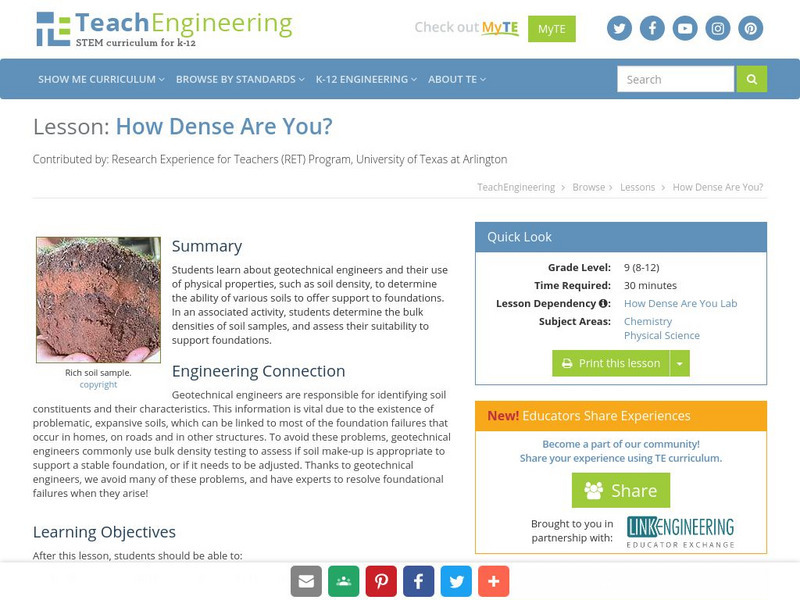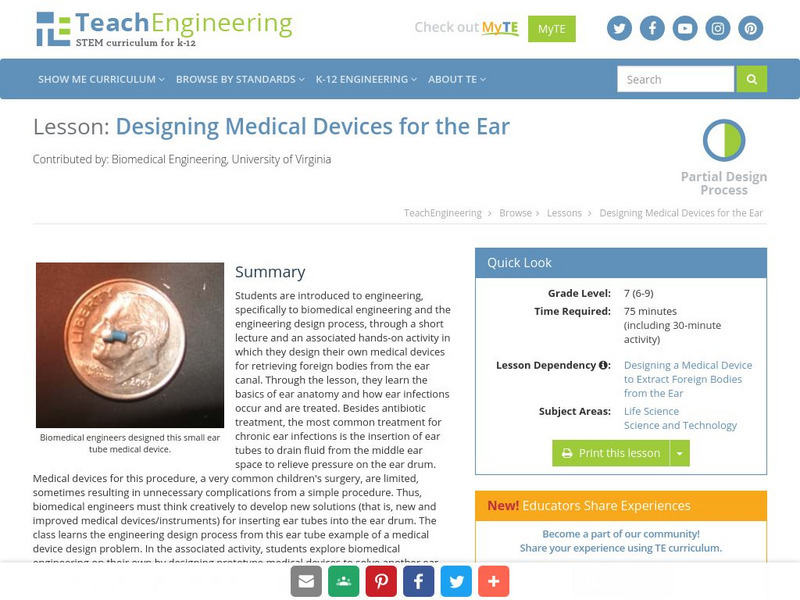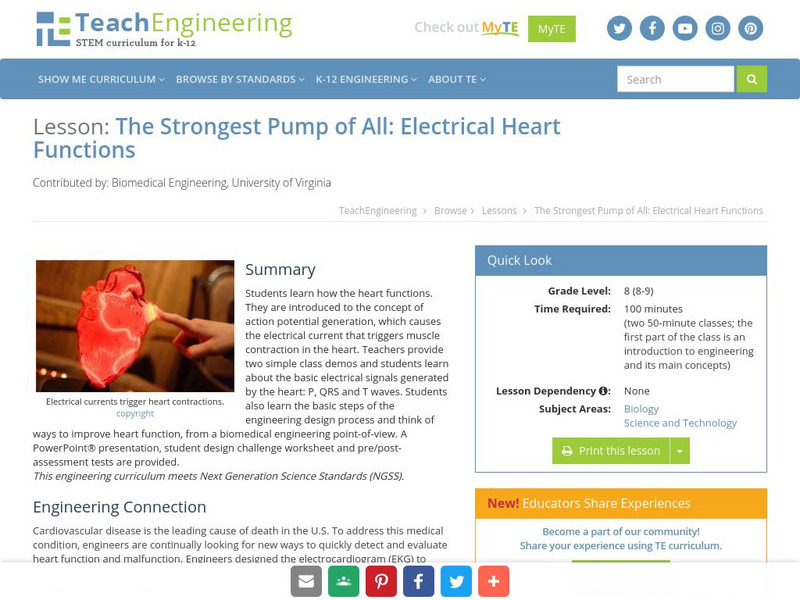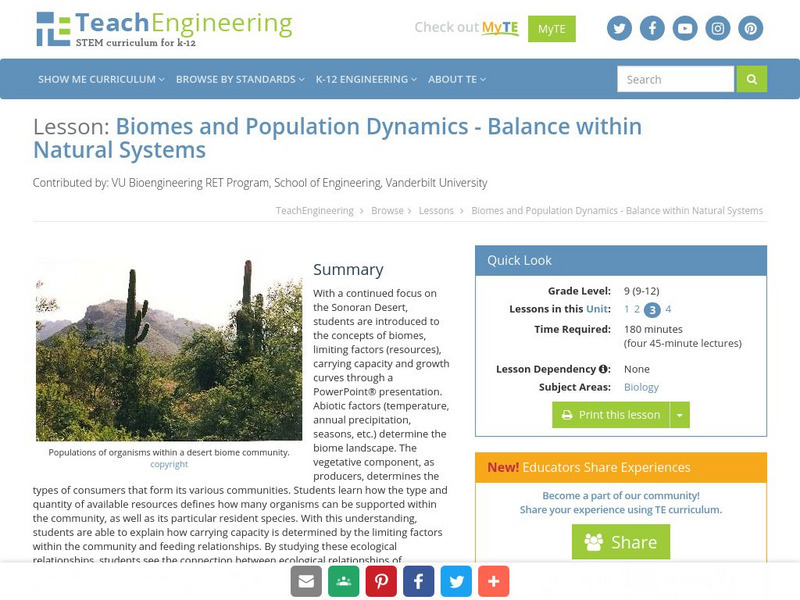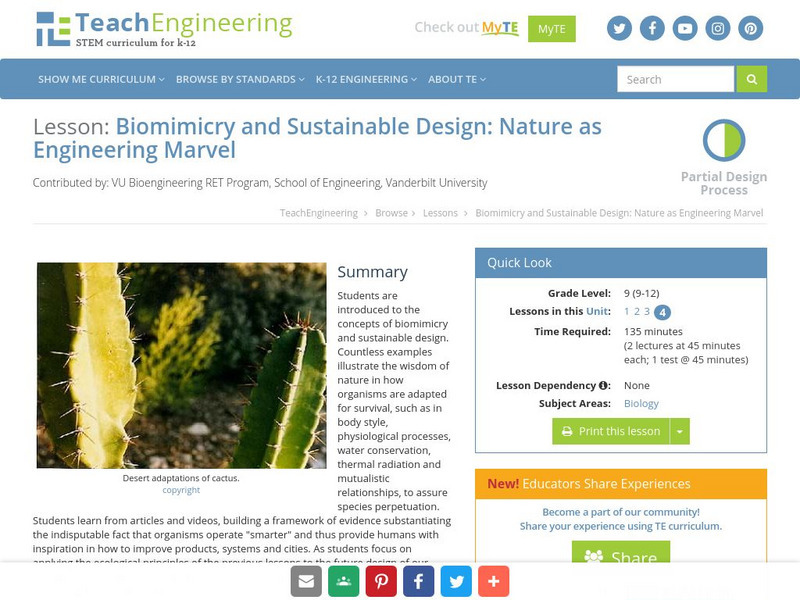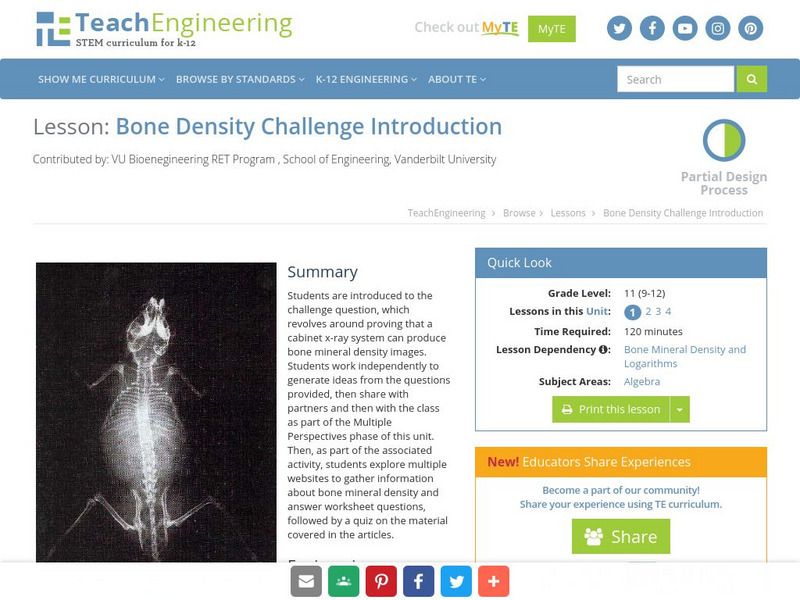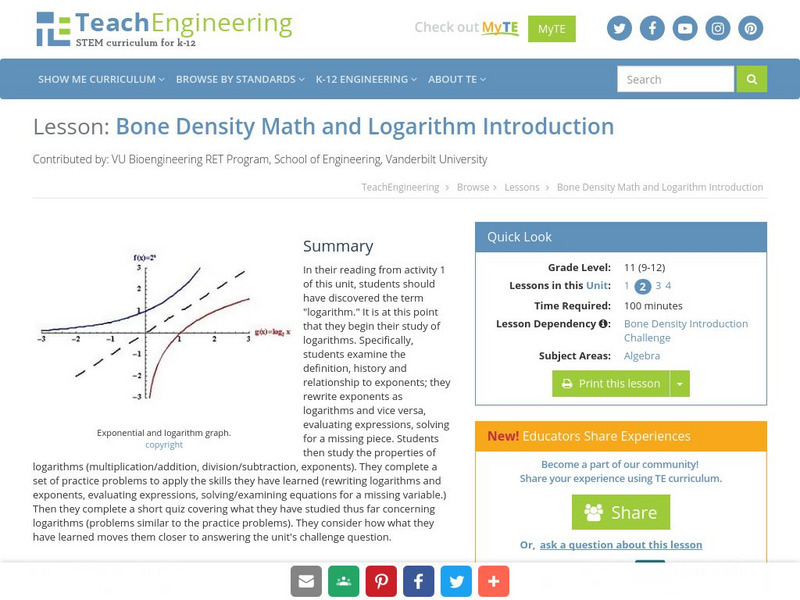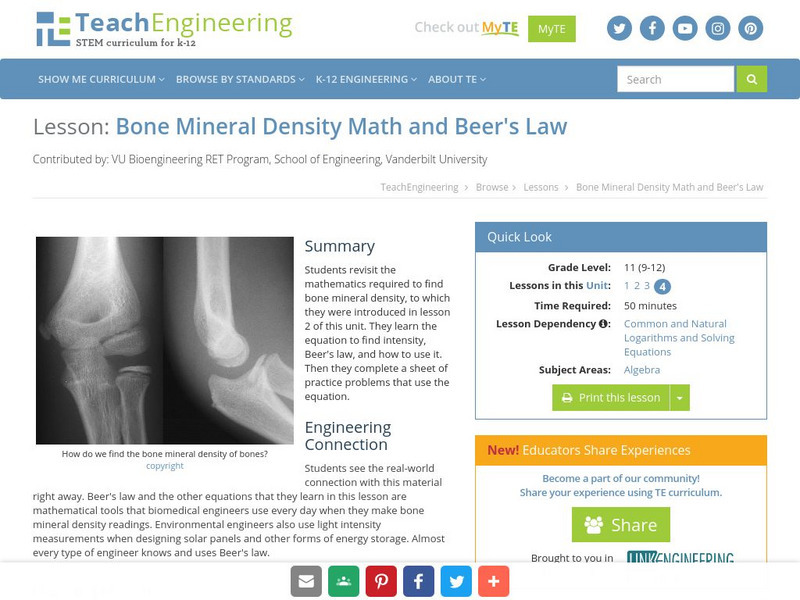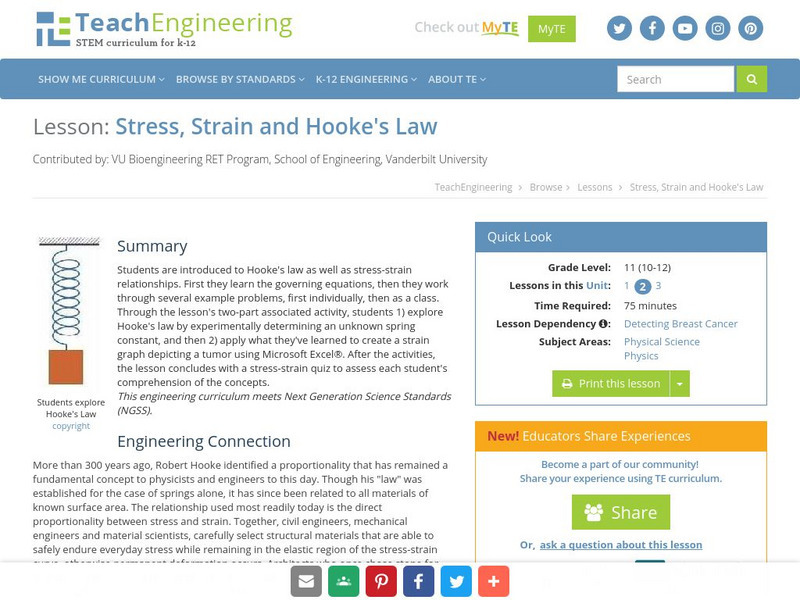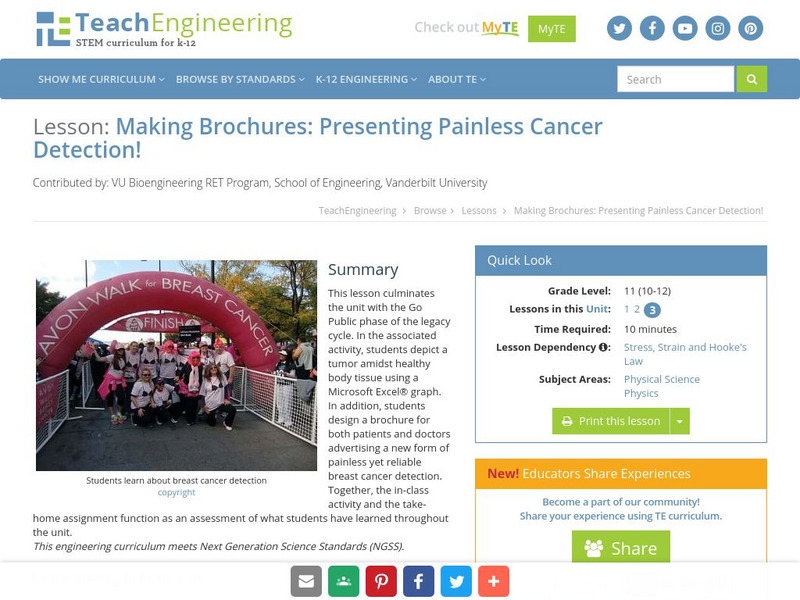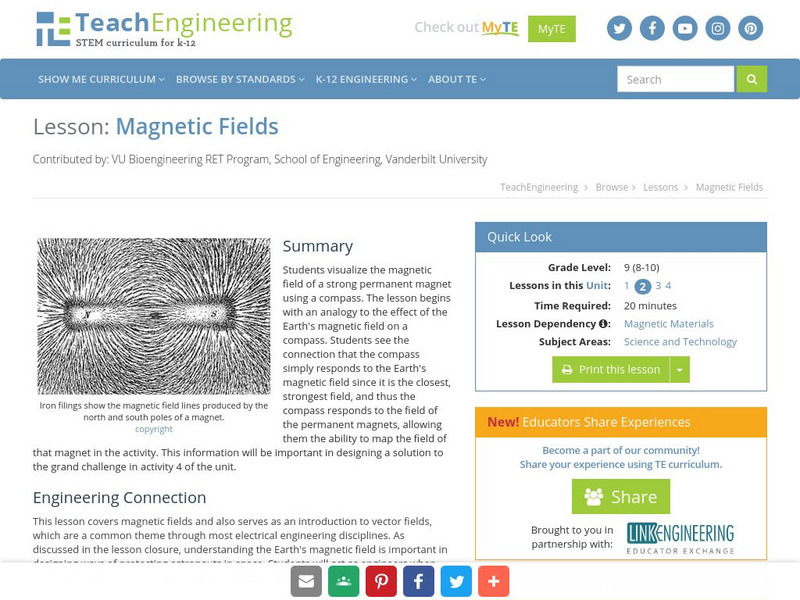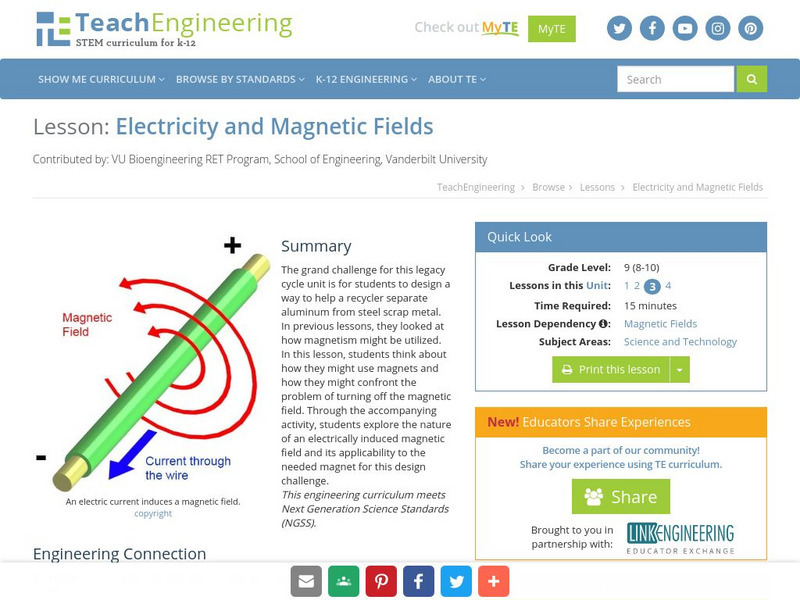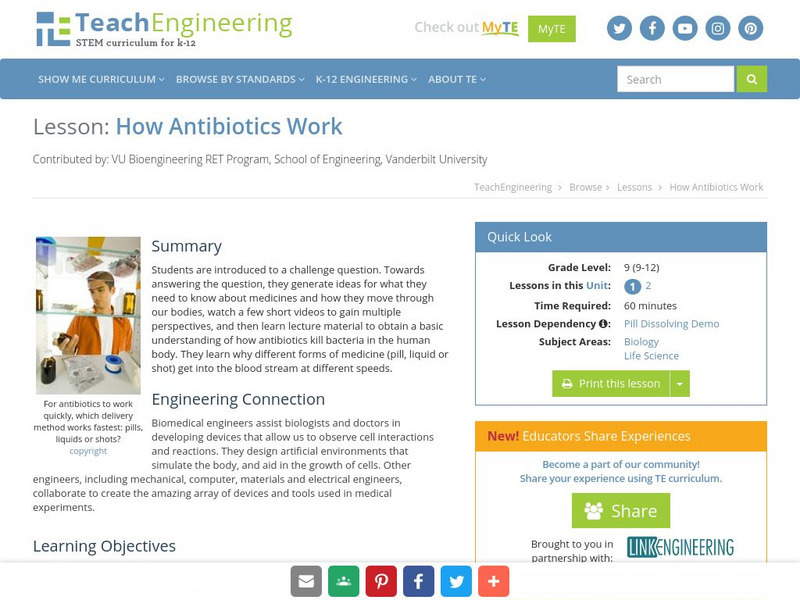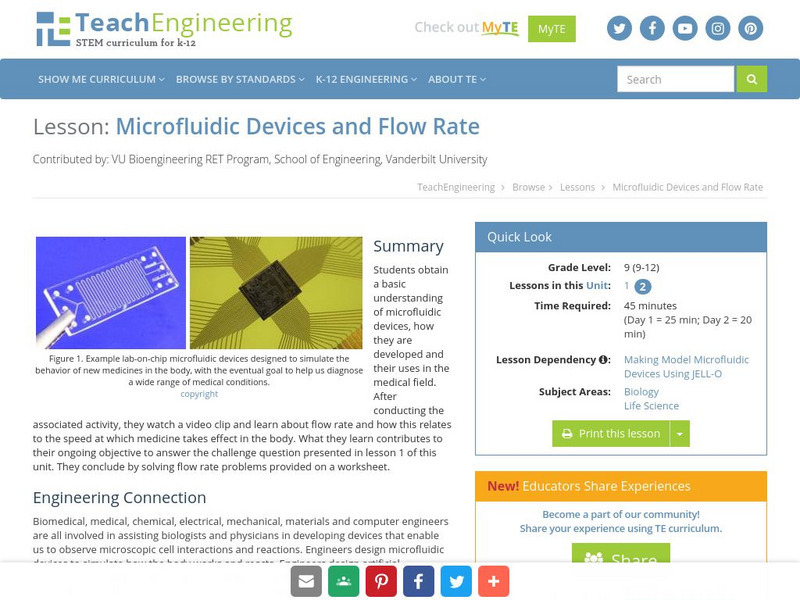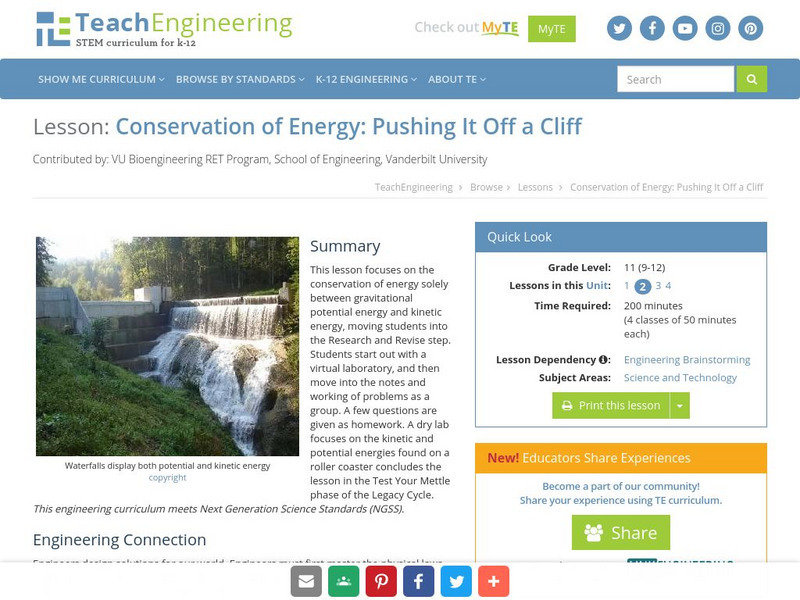TeachEngineering
Teach Engineering: What's Up With All This Traffic?
Expanding on the topic of objects in motion covering Newton's laws of motion, acceleration and velocity, which are taught starting in third grade, students are introduced to new concepts of speed, density, level of service (LOS) (quality...
TeachEngineering
Teach Engineering: How Dense Are You?
Learners learn about geotechnical engineers and their use of physical properties, such as soil density, to determine the ability of various soils to offer support to foundations. In an associated activity, students determine the bulk...
TeachEngineering
Teach Engineering: Designing Medical Devices for the Ear
Students are introduced to biomedical engineering and the engineering design process through a short lecture and an activity in which they design their own medical devices for retrieving foreign bodies from the ear canal. They learn...
TeachEngineering
Teach Engineering: The Strongest Pump of All
In this lesson plan the students will learn how the heart functions. Students will be introduced to the concept of action potential generation. The lesson plan will explain how action potential generation causes the electrical current...
TeachEngineering
Teach Engineering: Designing a Sustainable Guest Village
This lesson introduces students to their task of designing a permanent guest village within the Saguaro National Park. The design must provide a true desert experience to visitors while also emphasizing sustainable design, protection of...
TeachEngineering
Teach Engineering: Food Chains and Food Webs
This lesson, supported by the provided power point lecture (LESSON 1 and 2 Ecology Lecture Supplement ), introduces young scholars to the concepts of food chains and food webs. Through its use, students learn the difference between...
TeachEngineering
Teach Engineering: Biomes and Population Dynamics
This lesson begins with a PowerPoint slideshow that covers important ecological concepts about biomes, limiting factors, carrying capacity, and population growth. Learners will look at the population dynamics involved with the diversity...
TeachEngineering
Teach Engineering: Nature Is an Engineering Marvel
This lesson introduces learners to the concepts of biomicry and sustainable design. Students will learn to illustrate the wisdom of nature by demonstratiing how organisms adapt to their environment.
TeachEngineering
Teach Engineering: Bone Density Challenge Introduction
Learners are introduced to the challenge question, which revolves around proving that a cabinet X-ray system can produce bone mineral density images. Students work independently to generate ideas from the questions provided then share...
TeachEngineering
Teach Engineering: Bone Density Math and Logarithm Introduction
This project shows the connection between engineering, science and math by having students learn the equation needed to calculate bone mineral density. Lesson includes an explanation of the equation as well as practice problems and a quiz.
TeachEngineering
Teach Engineering: Common and Natural Logarithms and Solving Equations
Students continue an examination of logarithms in the Research and Revise stage by studying two types of logarithms--common logarithms and natural logarithm. In this study, they take notes about the two special types of logarithms, why...
TeachEngineering
Teach Engineering: Bone Mineral Density Math and Beer's Law
In this lesson students revisit the mathematics required to find bone mineral density, to which they were introduced in Lesson 2. They will learn the equation to find intensity and how to use it. There is a sheet of practice problems...
TeachEngineering
Teach Engineering: Detecting Breast Cancer
This lesson introduces students to their task of developing a painless means of identifying cancerous tumors. Solving the challenge will depend on an understanding of the properties of stress and strain. After being introduced to the...
TeachEngineering
Teach Engineering: Stress, Strain and Hooke's Law
This lesson offers an introduction to Hooke's Law as well as stress-strain relationships. Students will first learn the governing equations. Then students will work through several example problems first individually, then as a class. In...
TeachEngineering
Teach Engineering: Presenting Painless Breast Cancer Detection!
This lesson culminates the unit with the Go Public phase of the legacy cycle. In the associated activity, young scholars must depict a tumor amidst healthy body tissue using a graph in Microsoft Excel. In addition, students will design a...
TeachEngineering
Teach Engineering: Magnetic Materials
Learners begin working on the grand challenge of the unit by thinking about the nature of metals and quick, cost-effective means of separating different metals, especially steel. They arrive at the idea, with the help of input from...
TeachEngineering
Teach Engineering: Magnetic Fields
Students visualize the magnetic field of a strong permanent magnet using a compass. The lesson begins with an analogy to the effect of the Earth's magnetic field on a compass. Students see the connection that the compass simply responds...
TeachEngineering
Teach Engineering: Electricity and Magnetic Fields
The grand challenge for this legacy cycle unit is for students to design a way to help a recycler separate aluminum from steel scrap metal. In previous lessons, they have looked at how magnetism might be utilized. In this instructional...
TeachEngineering
Teach Engineering: Electromagnets
In this activity, the learners will complete the grand challenge and design an electromagnet to separate steel from aluminum for the recycler. In order to do this, students compare the induced magnetic field of an electric current with...
TeachEngineering
Teach Engineering: How Antibiotics Work
Young scholars are introduced to a challenge question. Towards answering the question, they generate ideas for what they need to know about medicines and how they move through our bodies, watch a few short videos to gain multiple...
TeachEngineering
Teach Engineering: Microfluidic Devices and Flow Rate
Students obtain a basic understanding of microfluidic devices, how they are developed and their uses in the medical field. After conducting the associated activity, they watch a video clip and learn about flow rate and how this relates...
TeachEngineering
Teach Engineering: Heart to Heart
Students learn about the form and function of the human heart through lecture, research and dissection. They brainstorm ideas that pertain to various heart conditions and organize these ideas into categories that help them research...
TeachEngineering
Teach Engineering: Blood Pressure Basics
Learners study how heart valves work and investigate how valves that become faulty over time can be replaced with advancements in engineering and technology. Learning about the flow of blood through the heart, students are able to fully...
TeachEngineering
Teach Engineering: Pushing It Off a Cliff
Lesson 2 moves into the Research and Revise step and focuses on the conservation of energy solely between gravitational potential energy and kinetic energy. Students start out with a virtual laboratory, and then move into the notes and...



